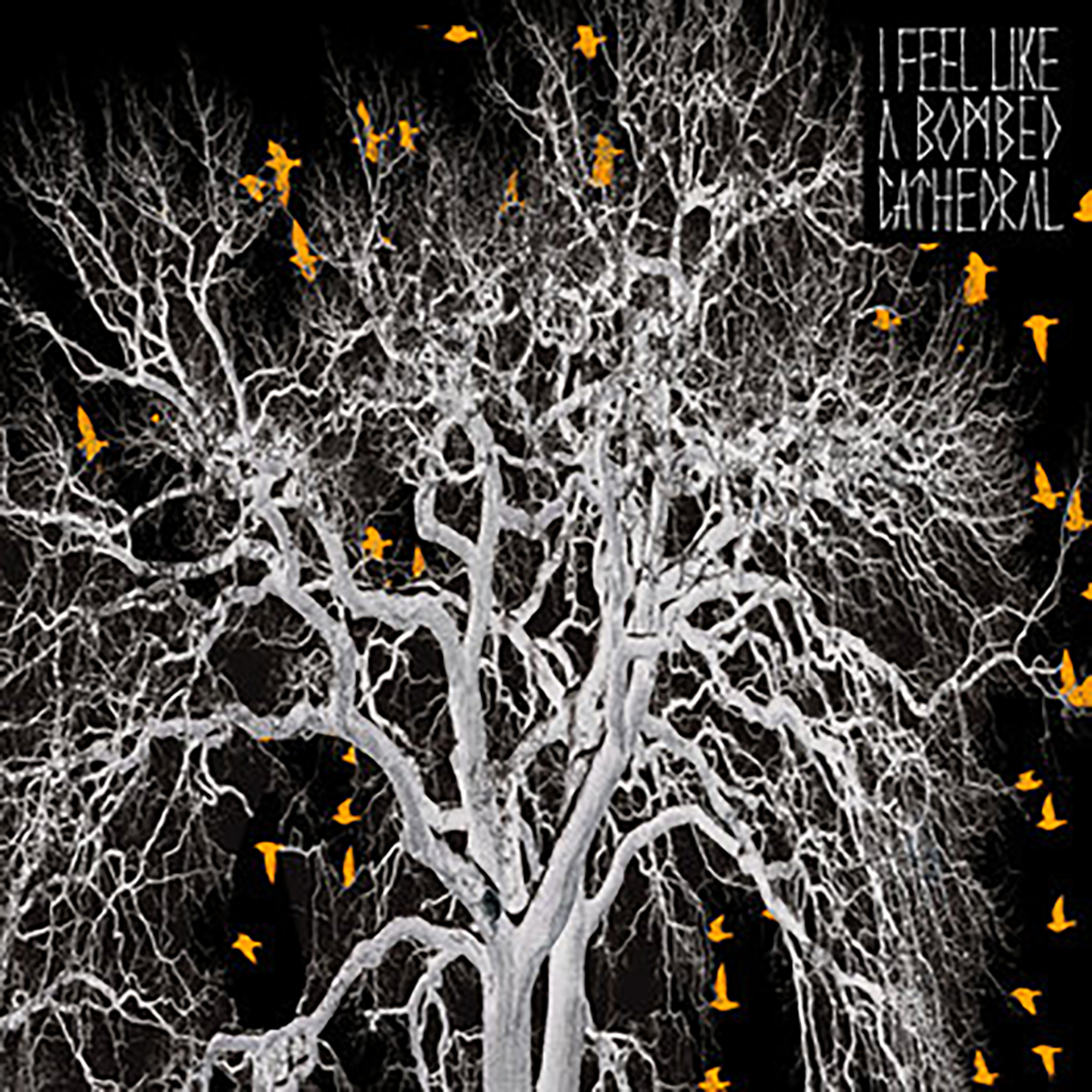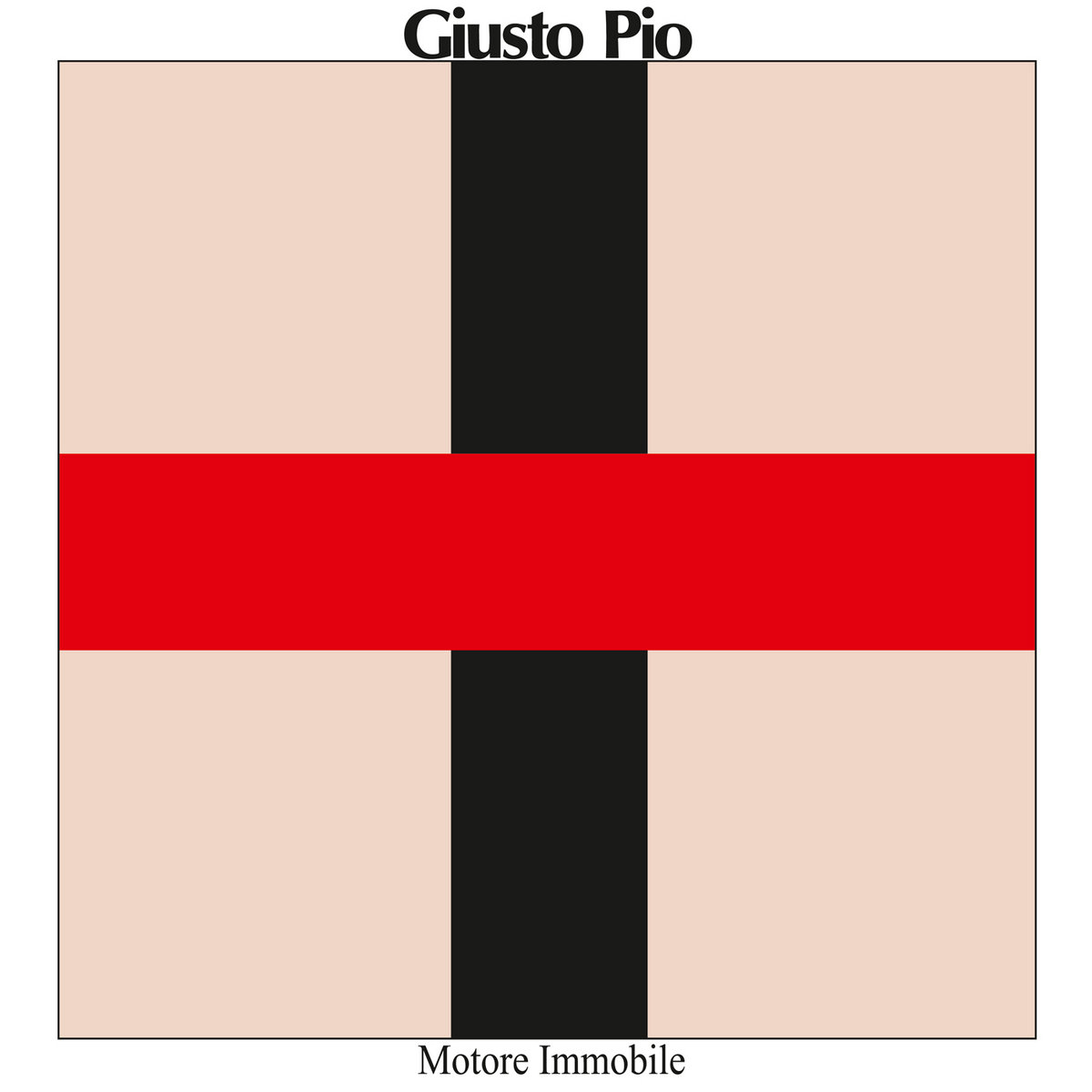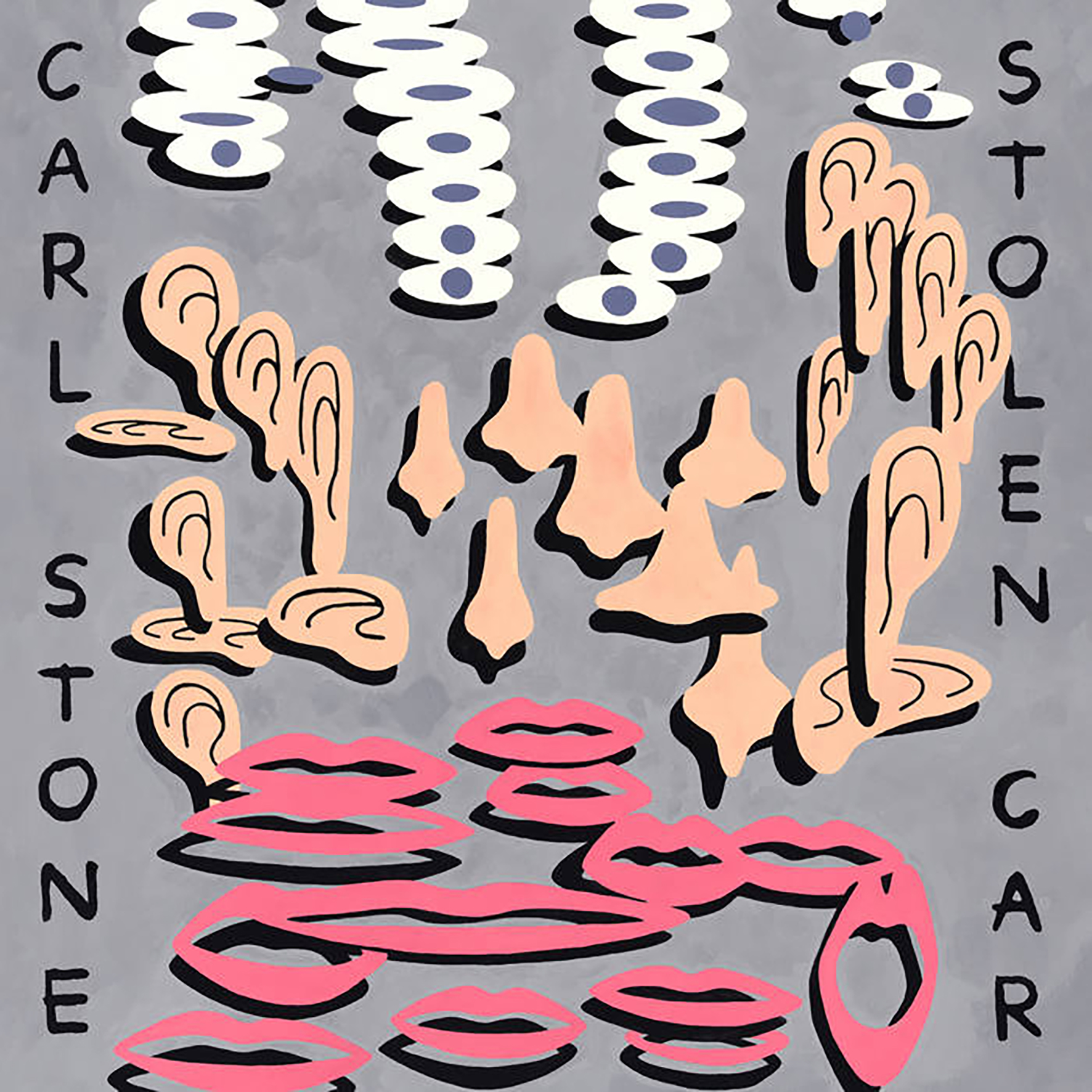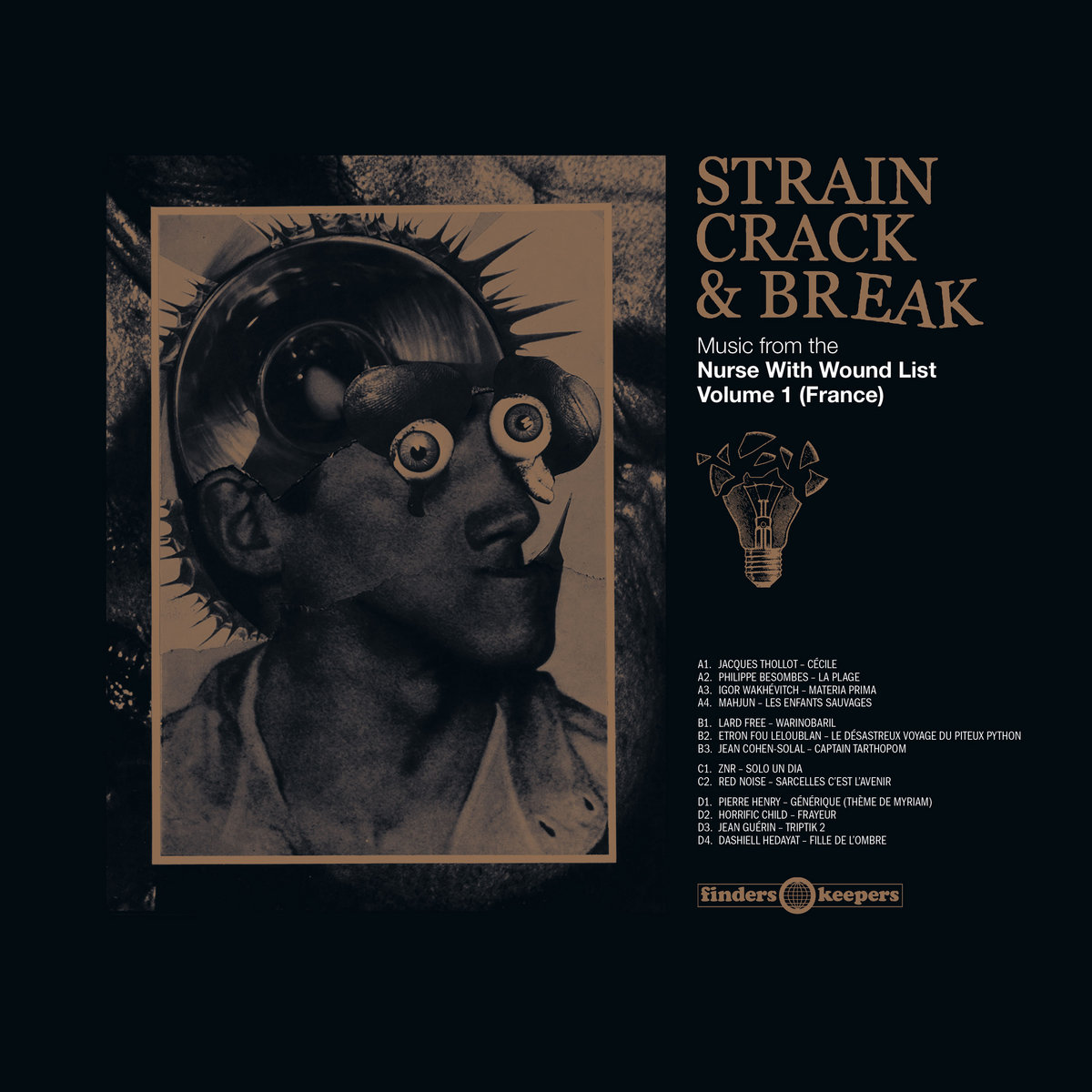 This solo drone project from Ulan Bator's Amaury Cambuzat has been one of my favorite discoveries of the last few years, as both AmOrtH and W featured moments that induced me to proclaim that Cambuzat was "a goddamn drone shaman." This latest album was a bit of a surprise, however, as Cambuzat casually made it available as a digital-only release on his Bandcamp page with just a simple description of "This is the very first recording of I Feel Like a Bombed Cathedral." Apparently, the recordings date from early 2018 and I am amazed that Cambuzat did not feel inclined to make them public until now, as a handful of these pieces are absolute gems that rank among the project’s finest work. A few of the other ones admittedly feel like a searching, partially formed vision of the greatness to come, but γένεσις is much, much better than its humble "vault clearing" origins suggest. I would not have been at all disappointed if this was a proper new Bombed Cathedral release, as the album is absolutely teaming with beautifully warped guitar sounds and immersive layers of richly textured psychedelia. In fact, γένεσις only heightens my expectations for whatever Cambuzat might be working on now, as no sane person would keep music this great on the shelf for three years unless they had something even better in the pipeline.
This solo drone project from Ulan Bator's Amaury Cambuzat has been one of my favorite discoveries of the last few years, as both AmOrtH and W featured moments that induced me to proclaim that Cambuzat was "a goddamn drone shaman." This latest album was a bit of a surprise, however, as Cambuzat casually made it available as a digital-only release on his Bandcamp page with just a simple description of "This is the very first recording of I Feel Like a Bombed Cathedral." Apparently, the recordings date from early 2018 and I am amazed that Cambuzat did not feel inclined to make them public until now, as a handful of these pieces are absolute gems that rank among the project’s finest work. A few of the other ones admittedly feel like a searching, partially formed vision of the greatness to come, but γένεσις is much, much better than its humble "vault clearing" origins suggest. I would not have been at all disappointed if this was a proper new Bombed Cathedral release, as the album is absolutely teaming with beautifully warped guitar sounds and immersive layers of richly textured psychedelia. In fact, γένεσις only heightens my expectations for whatever Cambuzat might be working on now, as no sane person would keep music this great on the shelf for three years unless they had something even better in the pipeline.
I have no idea if the opening "Te Deum" was the birth of this project or not, but it certainly does a hell of a job at conjuring up images of a recently bombed cathedral, as the organ-like tones of Cambuzat's guitar feel like rays of sunlight passing through thick smoke and stained glass (a feeling further enhanced by the deep, elegiac chord progression beneath). It is extremely brief, so it does not rank as an album highlight, but there are at least four other pieces that do. The first admittedly takes a while to get going, as "Tibi Omnes" devotes two minutes to a single sharp feedback-like tone that flickers like a candle. Fortunately, it then spends the next fourteen minutes blossoming into a beautiful, dreamlike vision of a mass in an ancient cathedral that has caught in a film projector and begun to burn and bubble in slow motion. The following "Dignare" gamely continues the "organ-like guitar tones collide with the distending fabric of reality" theme with great success. It roughly approximates the organ accompaniment to a silent gothic horror film, but slowed way down until it bleeds into itself while the projector erratically warps the film. Later "Te Ergo Quaesumus" continues another big theme ("nightmarishly crystalline approximations of a pipe organ"), but also sounds like wind chimes played back at such an extremely slow speed that everything is in a grainy, smeared state of suspended animation. I suppose the closing "γένεσις" could be the true first Bombed Cathedral piece given its name, but I would be surprised, as it is the most brilliant and sophisticated one on the album. It calls to mind a demonic calliope that acts as a nightmare machine, as "wrong" notes in the melody keep lingering to form sickly, infernal harmonies. All of that amounts to an impressively solid album, but anyone who digs Cambuzat's work will absolutely want to hear that title piece, as it is unquestionably a career highlight of some kind.
Samples can be found here.



 Should the World Fail to Fall Apart finds Murphy not entirely moving away from the entanglements of his former group, elaborating on the musical styles explored in Dalis Car. The musical stylings of his debut were problematic for me on its original release, enamored as I was of Bauhaus. Still, over the years, it has grown to become one of my personal favorites of his solo works despite it often being deemed one of his less worthy offerings. The album is reminiscent of a transition period, but the reissue is a reminder of his brilliance.
Should the World Fail to Fall Apart finds Murphy not entirely moving away from the entanglements of his former group, elaborating on the musical styles explored in Dalis Car. The musical stylings of his debut were problematic for me on its original release, enamored as I was of Bauhaus. Still, over the years, it has grown to become one of my personal favorites of his solo works despite it often being deemed one of his less worthy offerings. The album is reminiscent of a transition period, but the reissue is a reminder of his brilliance. This is the debut album from a Berlin-based foursome dedicated to performing the works of Malaysian-born composer/trombonist Rishin Singh. Notably, Singh is also a member of Konzert Minimal, which is a modern classical ensemble dedicated to performing compositions by the Wandelweiser collective. In a 2016 New Yorker profile of the Wandelweiser milieu, Alex Ross noted that one recurring theme in their work is a "ghost tonality never achieves stability; it will frustrate those who expect one chord to lead logically to another." Singh's own vision shares a lot of similar stylistic terrain, as A Fog Like Liars Loving is nothing if not ghostly (and creepy (and unsettling)). It resembles an alternate universe version of Low in which they were a chamber music ensemble that listened to a steady diet of nothing but Jandek, Scott Walker, Marble Index-era Nico, and warped old folk records played at the wrong speed. That said, Singh definitely has an unusually sophisticated sensibility regarding dissonant harmonies and the entire album has an eerily nocturnal, dread-soaked, and somnambulant feel that is uniquely Leider's own. Purportedly, the album also features an "understated gallows humor," which is also an achievement of sorts, as Singh has managed to cultivate a strain of black humor so bleak that even I often have a hard time detecting it.
This is the debut album from a Berlin-based foursome dedicated to performing the works of Malaysian-born composer/trombonist Rishin Singh. Notably, Singh is also a member of Konzert Minimal, which is a modern classical ensemble dedicated to performing compositions by the Wandelweiser collective. In a 2016 New Yorker profile of the Wandelweiser milieu, Alex Ross noted that one recurring theme in their work is a "ghost tonality never achieves stability; it will frustrate those who expect one chord to lead logically to another." Singh's own vision shares a lot of similar stylistic terrain, as A Fog Like Liars Loving is nothing if not ghostly (and creepy (and unsettling)). It resembles an alternate universe version of Low in which they were a chamber music ensemble that listened to a steady diet of nothing but Jandek, Scott Walker, Marble Index-era Nico, and warped old folk records played at the wrong speed. That said, Singh definitely has an unusually sophisticated sensibility regarding dissonant harmonies and the entire album has an eerily nocturnal, dread-soaked, and somnambulant feel that is uniquely Leider's own. Purportedly, the album also features an "understated gallows humor," which is also an achievement of sorts, as Singh has managed to cultivate a strain of black humor so bleak that even I often have a hard time detecting it. This latest release from Scott Morgan’s long-running loscil project is a bit of a conceptual detour from his usual fare, as the entire album was "sourced from a single three-minute composition performed by a 22-piece string orchestra in Budapest." That is not all, however, as that brave composition's unconventional journey also included an intermediate stage in which it was "lathe-cut on to a 7-inch, then 'scratched and abused to add texture and color.'" Despite those unusual origins, Clara still sounds exactly like a loscil album, as Morgan is nothing if not consistent. In this case, that basically translates as "a slow-motion dub techno album lurking behind a grayscale ambient fog," but the magic lies in the execution (as always) and Morgan has never been a slouch in that regard. In fact, he succeeds on two fronts with this release, as Clara is both another fine loscil album and an impressive feat of inventive de-/ re-construction, as Morgan managed to transform three minutes of music into a varied, absorbing, and dynamically satisfying album-length statement (and he made it all seem effortless and natural to boot).
This latest release from Scott Morgan’s long-running loscil project is a bit of a conceptual detour from his usual fare, as the entire album was "sourced from a single three-minute composition performed by a 22-piece string orchestra in Budapest." That is not all, however, as that brave composition's unconventional journey also included an intermediate stage in which it was "lathe-cut on to a 7-inch, then 'scratched and abused to add texture and color.'" Despite those unusual origins, Clara still sounds exactly like a loscil album, as Morgan is nothing if not consistent. In this case, that basically translates as "a slow-motion dub techno album lurking behind a grayscale ambient fog," but the magic lies in the execution (as always) and Morgan has never been a slouch in that regard. In fact, he succeeds on two fronts with this release, as Clara is both another fine loscil album and an impressive feat of inventive de-/ re-construction, as Morgan managed to transform three minutes of music into a varied, absorbing, and dynamically satisfying album-length statement (and he made it all seem effortless and natural to boot).
 I was a bit surprised to see this album getting the "10-year-anniversary deluxe vinyl reissue" treatment, as I did not remember it making a particularly big splash when it was first issued on Illegal Art back in 2011. Then again, I would be hard-pressed to think of any album in the "plunderphonics" milieu that has made a big splash in the last two decades, as existing in a legal gray area in a litigious world is not exactly optimal for promoting records. In any case, I missed this album the first time around because I mistakenly thought that I was already reasonably familiar with Vicki Bennett's work and found it charming, fun, and clever, but not quite something that destined to deeply move me or blow my mind. As it turns out, I was very wrong about that, as this album reaches some truly dazzling and remarkably poignant heights. While I do regret that I could have spent the last decade regularly enjoying this magnum opus, Welcome Abroad actually feels like a perfect album to experience for the first time in 2021, as it was recorded while Bennett found herself unexpectedly stranded in the US due to the Iceland volcano's impact on air travel. Consequently, Bennett was preoccupied with themes of "displacement" and "a longing for elsewhere," which are themes that feel especially universal and powerful in light of the last couple years. And, of course, there is no one better at transforming recontextualized fragments of pop culture ephemera into a life-affirming phantasia of mischievous joie de vivre than Vicki Bennett.
I was a bit surprised to see this album getting the "10-year-anniversary deluxe vinyl reissue" treatment, as I did not remember it making a particularly big splash when it was first issued on Illegal Art back in 2011. Then again, I would be hard-pressed to think of any album in the "plunderphonics" milieu that has made a big splash in the last two decades, as existing in a legal gray area in a litigious world is not exactly optimal for promoting records. In any case, I missed this album the first time around because I mistakenly thought that I was already reasonably familiar with Vicki Bennett's work and found it charming, fun, and clever, but not quite something that destined to deeply move me or blow my mind. As it turns out, I was very wrong about that, as this album reaches some truly dazzling and remarkably poignant heights. While I do regret that I could have spent the last decade regularly enjoying this magnum opus, Welcome Abroad actually feels like a perfect album to experience for the first time in 2021, as it was recorded while Bennett found herself unexpectedly stranded in the US due to the Iceland volcano's impact on air travel. Consequently, Bennett was preoccupied with themes of "displacement" and "a longing for elsewhere," which are themes that feel especially universal and powerful in light of the last couple years. And, of course, there is no one better at transforming recontextualized fragments of pop culture ephemera into a life-affirming phantasia of mischievous joie de vivre than Vicki Bennett. In theory, this album was released last September (which feels like a hundred years ago), but the LP only recently made its way into stores and distros, which is an increasingly familiar story these days. Fortunately, that long delay inspired me to revisit the album with fresh ears and I discovered that I actually liked it quite a lot more than I remembered. That statement deserves an asterisk though, as my earlier issue with Stolen Car was merely that I had already played the amazing Au Jus/The Jugged Hare and Ganci & Figli singles to death and those are probably the four best songs here. That unsurprisingly made the actual album a bit of an anticlimax, as my expectations were absolutely sky high and only those singles could meet them. Had I not already been extremely familiar with those four pieces, however, I suspect Stolen Car's release would have inspired me to run out into the street to grab random strangers by the shoulders and demand to know why they were just going about their mundane lives when they could be listening to this delirious, rapturous swirl of kaleidoscopic pop brilliance instead. On the bright side, not doing that may have spared me a night in jail, so I guess it all ultimately worked out. Admittedly, I still think this is a bit of an uneven album, but it is at least half of a masterpiece too, as I am hard-pressed to think of many people who can touch Carl Stone at the height of his powers (which he is frequently at here).
In theory, this album was released last September (which feels like a hundred years ago), but the LP only recently made its way into stores and distros, which is an increasingly familiar story these days. Fortunately, that long delay inspired me to revisit the album with fresh ears and I discovered that I actually liked it quite a lot more than I remembered. That statement deserves an asterisk though, as my earlier issue with Stolen Car was merely that I had already played the amazing Au Jus/The Jugged Hare and Ganci & Figli singles to death and those are probably the four best songs here. That unsurprisingly made the actual album a bit of an anticlimax, as my expectations were absolutely sky high and only those singles could meet them. Had I not already been extremely familiar with those four pieces, however, I suspect Stolen Car's release would have inspired me to run out into the street to grab random strangers by the shoulders and demand to know why they were just going about their mundane lives when they could be listening to this delirious, rapturous swirl of kaleidoscopic pop brilliance instead. On the bright side, not doing that may have spared me a night in jail, so I guess it all ultimately worked out. Admittedly, I still think this is a bit of an uneven album, but it is at least half of a masterpiece too, as I am hard-pressed to think of many people who can touch Carl Stone at the height of his powers (which he is frequently at here). The Nurse With Wound List is a unique passport to musical discoveries located beyond the horizon of well-trodden flat Earth popular culture. NWW's founder member and sole curator, Steven Stapleton, has teamed with the Finders Keepers label to issue one track by every artist mentioned in the directory of obscurity. The second edition (Germany) is highly anticipated, but this first volume announces a high standard with gems including those from Horrific Child, Jean Guérin, Lard Free, Pierre Henry, and ZNR. Compilation albums can tend to be patchy, but this one is a consistent gift, probably because it originates from a lengthy real world exploration, the kind of which will never be replicated by any amount of fast clicking through the digital haystack. The Strain Crack & Break series is going to confound the expectations of seasoned crate diggers and newcomers alike.
The Nurse With Wound List is a unique passport to musical discoveries located beyond the horizon of well-trodden flat Earth popular culture. NWW's founder member and sole curator, Steven Stapleton, has teamed with the Finders Keepers label to issue one track by every artist mentioned in the directory of obscurity. The second edition (Germany) is highly anticipated, but this first volume announces a high standard with gems including those from Horrific Child, Jean Guérin, Lard Free, Pierre Henry, and ZNR. Compilation albums can tend to be patchy, but this one is a consistent gift, probably because it originates from a lengthy real world exploration, the kind of which will never be replicated by any amount of fast clicking through the digital haystack. The Strain Crack & Break series is going to confound the expectations of seasoned crate diggers and newcomers alike. The latest run of releases from Albany NY’s Matt Weston have been growing consistently in scope and length. After a slew of 7" releases, there was the 2019 12" EP A New Form of Crime, the LP Tell Us About Your Stupor from last year, and now this double record. Four Lies is an excellent progression, as Weston has filled the expanding formats with even more creative and unique sounds. On Four Lies his use of varied electronic treatments continues, but the integration of more of his percussive expertise makes it all the better.
The latest run of releases from Albany NY’s Matt Weston have been growing consistently in scope and length. After a slew of 7" releases, there was the 2019 12" EP A New Form of Crime, the LP Tell Us About Your Stupor from last year, and now this double record. Four Lies is an excellent progression, as Weston has filled the expanding formats with even more creative and unique sounds. On Four Lies his use of varied electronic treatments continues, but the integration of more of his percussive expertise makes it all the better. I have been aware of Daniel Bachman's work for quite some time, as he has always been one of the more reliably excellent and virtuosic artists in the post-Fahey "American Primitive" milieu, but I was apparently not paying nearly enough attention to notice how far he had evolved beyond that scene in recent years. I believe Bachman first started to conspicuously head in this more psych-minded and abstract direction with 2016's self-titled release, so I suppose I have some catching up to do, yet Axacan is the album that is currently being hailed as a masterpiece so it seemed like a good place to start. Amusingly, I think it might actually drift too far from Bachman's instrumental prowess to land in my own personal pantheon of masterworks, but it is certainly one hell of a bold, surprising, and radical release. To my ears, it resembles some kind of impressionistic and hallucinatory "found footage" diary of unsettling sound collages far more than it does a guitar album. In fact, Axacan so vividly evokes disjointed, elliptical, and poetic scenes from the aftermath of an apocalypse that it calls to mind a classic George Romero zombie film as reimagined by Terrence Mallick.
I have been aware of Daniel Bachman's work for quite some time, as he has always been one of the more reliably excellent and virtuosic artists in the post-Fahey "American Primitive" milieu, but I was apparently not paying nearly enough attention to notice how far he had evolved beyond that scene in recent years. I believe Bachman first started to conspicuously head in this more psych-minded and abstract direction with 2016's self-titled release, so I suppose I have some catching up to do, yet Axacan is the album that is currently being hailed as a masterpiece so it seemed like a good place to start. Amusingly, I think it might actually drift too far from Bachman's instrumental prowess to land in my own personal pantheon of masterworks, but it is certainly one hell of a bold, surprising, and radical release. To my ears, it resembles some kind of impressionistic and hallucinatory "found footage" diary of unsettling sound collages far more than it does a guitar album. In fact, Axacan so vividly evokes disjointed, elliptical, and poetic scenes from the aftermath of an apocalypse that it calls to mind a classic George Romero zombie film as reimagined by Terrence Mallick.
